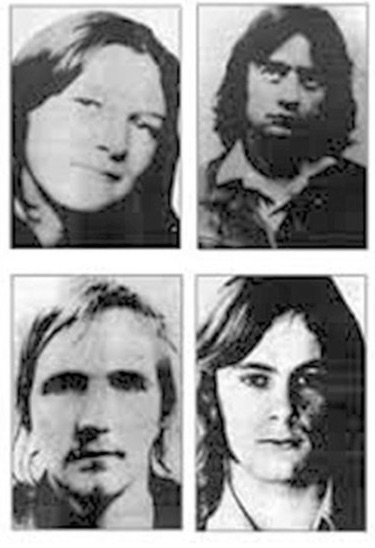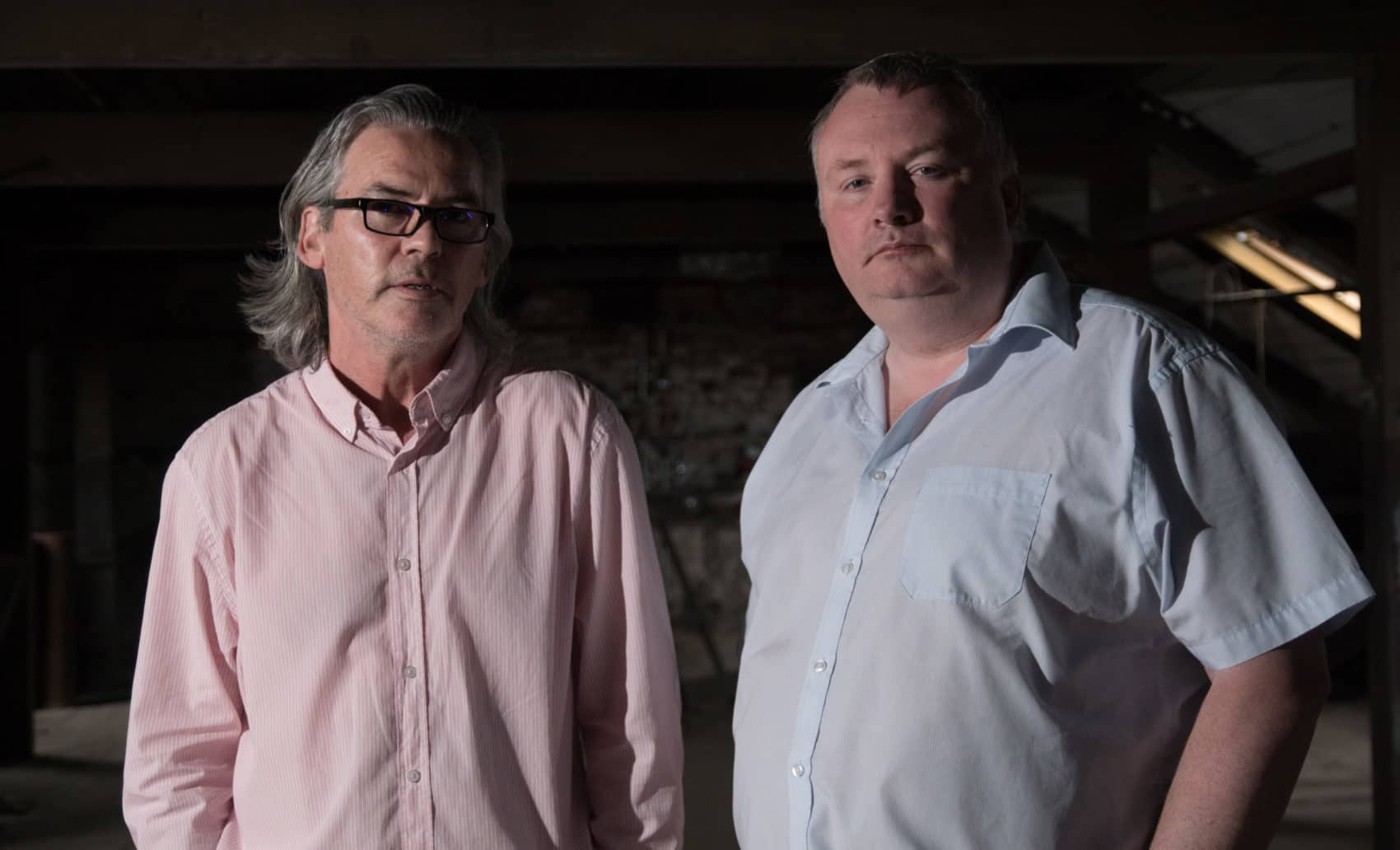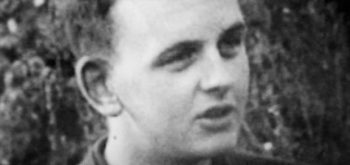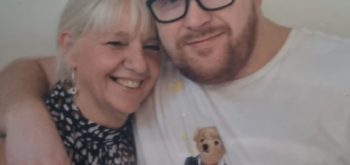Early evening on December 3, 1974 Anne Maguire was washing up after the evening meal in her house in Kilburn, North London. With her was her six-year-old daughter, Anne-Marie, her husband and her second oldest son, John. Also in the house were brother Shaun Smyth, Giuseppe Conlon, the husband of Anne’s sister, and Pat O’Neill. Pat’s wife had been admitted to hospital that afternoon as an emergency and he was at the house to ask Anne if she would look after his children so he could go and visit his wife.
Anne’s other children, Vincent and Patrick Jr, were out. Vincent was attending classes at college as a trainee gas engineer and Patrick was at the local youth club. Shaun, who lived in Belfast, was working in London as a labourer and had come home from work earlier. Giuseppe had arrived in London that day having travelled from Belfast in order to speak to the solicitors representing his son Gerry Conlon.
Suddenly officers from the Surrey Constabulary crashed through the doorway. They had dogs with them and were armed. Pandemonium broke out as the officers flooded the premises, screaming and shouting. They began searching the premises and, in the process, wrecked it. As Vincent and Patrick Jr returned home, they were arrested along with the rest of the household.
They were told that they were being arrested for terrorist offences. They were split up and taken to two North London police stations. Each of them had their hands swabbed and scrapings were taken from under their fingernails. The order in which this was done was determined by the officer doing the swabbing. The four lots of swabs were then delivered in two separate deliveries to the Royal Armament Research and Development Establishment at Woolwich. There the swabs were tested by a young trainee forensic scientist. He chose the order in which he tested them and recorded the testing as he did it.
That testing was to become critical in what was to happen later. It involved irrigating the swabs with ether to extract any material that might be contained on the swabs and then, using a technique known as thin layer chromatography, the extractions were tested to see if they produced a result.
They did. The forensic scientists told the police that the tests were positive for nitroglycerine and that the test that they were using was specific for nitroglycerine. Anne and her husband Patrick, Vincent and Patrick Jr, Sean Smyth, Guiseppe Conlon and Pat O’Neill were all charged with possession of nitroglycerine.
*

What had brought the Surrey police to Anne Maguire’s door? They had been investigating the Guildford pub bombings. On 5 October 1974, the IRA detonated bombs blowing up two pubs in the garrison town popular with soldiers and killing five people and injuring many more. In the aftermath of paramilitary violence, the public mood was ugly: there was a backlash against Irish people living in Britain and the police were under pressure to find those responsible for bringing terror to the streets of Surrey.
The police arrested some 46 people including the three men and one woman who became known as Guildford Four: Paul Hill, Gerry Conlon, Patrick Armstrong and Carole Richardson. You can read Mary-Rachel McCabe interview with Gerry Conlon shortly before he died (here) and Paul May on Justice, Moral Panic and the Irish for Proof, issue 1 (here).
Not a shred of evidence
The police decided that if they had genuine IRA people in custody, then they would be far more fearful of what their fellow paramilitaries might do to them if they talked, so they decided to up the ante. Using violence, abuse and intimidation, they forced the Guildford Four to make coerced self-incriminating statements. Those statements were mutually inconsistent on over 100 points. Nevertheless, they amounted to an admission that the Guildford Four had taken part in the Guildford bombings.
Gerry Conlon and Paul Hill had told the police in their false confessions that Conlon’s aunt, Anne Maguire, had taught them how to make bombs. At that stage and right the way through the trial, there was not another shred of evidence against the Guildford Four – the only evidence against them were their (false) confessions. The Maguire Seven made no confessions at all.
Additionally, Anne was charged with four counts of murder and with conspiracy to murder. The allegation against her was that she had been one of the two women that the police knew had formed part of the bombing teams.
In the Horse and Groom a couple – they became known as the courting couple because they were kissing each other – was subsequently described by people drinking in the pub on the night. In the Seven Stars pub, witnesses told the police the team had comprised two men and one woman.
Surrey police had decided that Anne Maguire and Carole Richardson were those two girls.
The police had no evidence that Anne Maguire was involved in the Guildford bombings. Anne Maguire was held in custody charged with murder from December 1974 until the murder charges were dropped in February 1975. Anecdotally it is said that there was a tremendous row between the Surrey police and the Crown’s legal team. The police pleaded with the barristers to continue to hold Anne on the charges of murder. They felt sure that they would find some evidence that would support the charge. They never did.
Lies and forensics
The scientists at Royal Armament Research and Development Establishment (RARDE) knew that the thin layer chromatography (TLC), test was not specific for nitroglycerine. There was another explosive, PETN, which is chemically completely dissimilar to nitroglycerine, which proved positive on the test and was indistinguishable from nitroglycerine.
The scientists had sent a memo to Dr John Yallop, who was the former director at RARDE, and who was advising the Maguire Seven defence teams, telling him that they had discovered this fact sometime in the summer of 1974 (i.e., before the Guildford bombing). The whole case against the Maguire Seven was based on the specificity of the TLC test. The forensic scientists gave evidence in court as to the specificity of the test excluding any other possible substance.
That was a lie – as they knew full well.
The defence were presented with an insuperable problem. The TLC test had not been tested on every known substance or combination of substances so that the specificity of the test was not disproven by extensive testing against all known substances.
The judge, Mr Justice Donaldson, cleverly turned the matter around, arguing that if specificity was being challenged it was for the defence to prove that some substance other than nitroglycerine could produce the same result on the test. The defence were unable to prove that any other substance would prove positive.
As the trial drew to a close, and after all evidence had been given, Dr Yallop found the memo.
Again, the judge was clever. He asked the barristers representing the Maguire’s whether they wanted the jury to know that the test was not specific and that another explosive had been discovered which proved positive and indistinguishable from nitroglycerine on the test. The barristers backed down.
It was for the Crown to prove whether the substance found on the tests was nitroglycerine and, having pinned their colours to a charge which specified nitroglycerine which relied on the test being specifically to reveal that explosive, what the judge should have done (and what the defence barristers should have argued for) was to bring the trial to close. It was absolutely plain that the Crown could not prove the presence of nitroglycerine. Further the police could not prove that PETN had been involved in the Guildford bombings as there was no scientific evidence to show that the other explosive (PETN) was involved. All the scientific analysis demonstrated was that it was a nitroglycerine-based explosive that was used in the bombs placed in the pubs.
*
The Maguire Seven were convicted. Anne and her husband received 14 years’ imprisonment. Guiseppe, Shaun and Pat received 12. Vincent received five years and Patrick Jr four years. Pat O’Neill had his sentence reduced to eight years when the Court of Appeal felt that his arrival by chance at the Maguire household because of circumstances beyond his control was a mitigating factor.
The convictions made Anne-Marie and John Maguire orphans, in effect. Their parents were located in different prisons hundreds of miles away from Kilburn. They were rarely able to visit their parents. Vincent and Patrick Jr on their release faced the same problem.
The devastation wrought upon the family is the subject of Stephen Nolan’s harrowing new BBC documentary A great British Injustice: The Maguire story available on iPlayer (here). The damage done was profound and longterm and, to this day, they and their loved ones live, are still struggling to come to terms with it. You can read Mary Rachel McCabe’s interview with Patrick Maguire (here).
The Maguire Seven appealed. The lack of specificity of the test was a crucial issue but the scientists had an answer. They claimed that the brightness of the colour produced on the TLC test could distinguish nitroglycerine from PETN. No other forensic scientists in the UK had ever witnessed this. Indeed, many of the other forensic laboratories were moving on to gas chromatography, a modern and efficient method which is used for separating and analyzing compounds that can be vaporized without decomposition. Gas chromatography could distinguish between PETN and nitroglycerine. The TLC test was limited in efficiency and out of date. Nevertheless, the Court of Appeal was persuaded that the charges against the Maguire Seven had been proved and rejected their appeal.
*

Anne Maguire with husband Patrick and Patrick Jr, then 28 years old
I have represented the Maguire Seven since their appeal failed in 1977. One of my great concerns was the deteriorating health of Guiseppe Conlon. At the time of his arrest he was suffering from tuberculosis and had badly scarred lungs from previous attacks. He was weak, easily exhausted and incapable of work and had been off work long-term sick for many years. He failed to complete his sentence dying in January 1980 from emphysema caused by the damaged lungs and the recurrent TB. The Home Office had been aware that he was seriously ill, likely to die but refused to release him.
Because he was a Category A prisoner (‘whose escape would be highly dangerous to the public or national security’) he was held in maximum security prisons and usually located on the third floor. Other prisoners wrote to me about his deteriorating health.
They told me that he was unable to walk down the three floors to the groundfloor to collect his meals, which he was obliged to do, and then to walk back with his meal to eat it in his cell. Other prisoners were not allowed to bring him his meal. Prisoners started to use what little money they had to buy Complan, a nutritional dietary supplement drink that offered protein, carbohydrates and a collection of 26 vitamins and minerals, to keep Guiseppe alive.
I went to Wakefield to see him. It took him so long to get from the third floor of the wing to the visiting area that he was unable to speak to me for a full 30 minutes after his arrival.
I was satisfied that he was not receiving proper medical treatment. My attempts to get the Home Office to ensure that he did met with sarcastic rejection letters. I therefore employed a consultant who specialised in the area of medicine that involved Guiseppe’s treatment. He was horrified at the circumstances in which Guiseppe was being held. He produced a detailed report in which he insisted that he should be receiving treatment which he had not received, specified the treatment he should have and said that he should be moved to the ground floor. I sent a copy of the report to the Home Office but Guiseppe’s circumstances did not change. I then became aware that he had been transferred to Wormwood Scrubs because it was adjacent to and connected to a hospital.
Cardinal Basil Hume saw him in late 1979 on a pastoral visit to the prison. He so impressed the Cardinal with his insistence that he was an innocent man wrongly convicted that he decided on a deputation to look into the miscarriages of justice of the Maguire Seven and the Guildford Four.
May inquiry
 When the convictions of the Guildford Four had been quashed in 1989 the government set up a public enquiry under the chairmanship of Sir John May. Because three Surrey officers had been charged with offences relating to the perjured evidence they had given against Patrick Armstrong, Sir John decided that he could not conduct the Inquiry into the Guildford Four convictions in public because that might prejudice the trial of the officers.
When the convictions of the Guildford Four had been quashed in 1989 the government set up a public enquiry under the chairmanship of Sir John May. Because three Surrey officers had been charged with offences relating to the perjured evidence they had given against Patrick Armstrong, Sir John decided that he could not conduct the Inquiry into the Guildford Four convictions in public because that might prejudice the trial of the officers.
It took four years to try the officers. They used every trick they could think of to avoid being tried. Sir John therefore decided that he would hear evidence in private and excluded both the Guildford Four and their legal representatives from any part in these hearings. The witnesses were however at permitted to have their lawyers present when they gave evidence to Sir John. Having concluded his inquiry, the government then put a closing order on the papers relating to his Inquiry which still remains to this day. Theoretically the papers will be opened in 2020 but I have asked under the Freedom of Information Act for the disclosure of the report made by the Metropolitan police to Sir John concerning the terrorist offences committed in 1974 and 1975. I have been refused access to that document for security reasons and because, apparently, the police are still looking for those who committed the offences.
The Guildford bombing was part of an IRA campaign. In 1974 and 1975, some 40 bombs exploded in London and 35 people were killed, and injuring many more. I Interviewed the Balcombe Street four, part of an active service unit of the Provisional IRA who were arrested after a six day standoff with the police in December 1975, and fellow terrorist Brendan Dowd the following year. I obtained full, complete and detailed confessions to both the Guildford and Woolwich bombings with idiosyncratic information that could only have been known to those who had taken part.
They were sentenced to life imprisonment. When asked why no prosecution had been taken against those who had confessed, the Director of Public Prosecutions said there was no point in putting them on trial because they were already serving life sentences.
This was not true because the confessions were obtained before they stood trial.
Contaminated evidence
During the May Inquiry, I was given another opportunity to pursue the alleged positives on the TLC test. The fact that intrigued me was that the tests had been carried out at RARDE in an order which was chosen by the scientist carrying out the tests. That in itself was random and it had been preceded by an earlier randomness in that the swabs had been taken by two different officers in different police stations who in turn chose the order in which they took the swabs.
The test results recorded showed massive concentrations of positives in the first two samples tested which then declined in positivity until the swabs of the hands of Anne Maguire and her son John showed no positives at all.
The Crown had an explanation at their trial for the fact that they were unable to find any traces whatsoever of nitroglycerine in the Maguire household or the garden of the house and adjoining properties despite the fact that they carried out a detailed minute manual search, used sniffer dogs and sniffer devices. Their explanation was that all seven had been engaged in disposing of a quantity of nitroglycerine explosive which involved each of them taking a piece of the nitroglycerine explosive and flushing it down the toilet. All this had taken place in a rush because Guiseppe Conlon had arrived at the house and informed them that Gerry Conlon had been arrested.
Why it was necessary for all seven to be engaged in this was never explained by the prosecution. However, Anne’s hands had no traces on them. Then the police learned that Anne had a skin condition on her hands and was inclined to use rubber gloves when handling household detergents et cetera. They then seized a quantity of gloves from the drawer in the kitchen of her house and the gloves proved positive for the TLC test.
We had been denied access to the notebooks of the scientists at RARDE during the course of the initial trial and appeal of the Maguire Seven and during the course of Sir John May’s Inquiry.
A scientist sought to explain to Sir John May why the declining positives was nothing to be concerned about but I would not buy that. I instructed two eminent forensic scientists and asked them how they could explain the declining positives. They produced a report from me which showed that they were able to duplicate the positives on the original tests exactly. What they did was to start off with a quantity of ether that was already contaminated with nitroglycerine. As that ether was used to irrigate the swabs fresh ether, which was clean and uncontaminated by nitroglycerine, was added to the initial supply. Sir John refused to accept the report prepared by the forensic scientists for me which provided him with a logical and plausible way to explain how the positives had come about. He recommended that the matter be sent back to the Court of Appeal based on some tests that he had had carried out which showed that if a towel contaminated with nitroglycerine were handled by a number of people the nitroglycerine could be transferred from the towel to the hands of the people that used it and therefore a potentially innocent explanation could be provided for the contamination.
The matter was sent back to the Court of Appeal by the Home Secretary. The scientists’ notebooks were produced as exhibits in the Court of Appeal. At the end of the first week I asked the court clerk if I could borrow the notebooks in order to read them telling him that I had not been able to access them previously. He told me that provided I returned them intact on Monday morning I could do so. I spent the entire weekend reading and photocopying those notebooks. What they showed was that the laboratory at RARDE had a serious ongoing problem with contamination by nitroglycerine and over a long period of time.
Swabbing carried out in the laboratory found it in the toilets, in the canteen, on the back of chairs, on notice boards and in a variety of other places. All of that had been transferred from the hands of scientists who had been handling material contaminated by nitroglycerine.
Moreover, there was evidence that certain tests carried out in cases where there was a suspicion of involvement in terrorist offences had to be dropped because the contamination nullified the evidence that the scientists wanted to produce. Lastly, they demonstrated that during the course of the Maguire trial the scientists had desperately tried to produce some additional evidence that the Maguire Seven had handled nitroglycerine.
*
RARDE knew they had a problem with contamination, just as they knew that the TLC test was not specific for nitroglycerine. They were happy to lie their way out of any criticism and to commit perjury on an industrial scale. In so doing they caused seven innocent people to be sentenced to massive terms of imprisonment, caused untold misery to them and their families, caused mental health issues particularly with post-traumatic stress disorder, destroyed families, snatched childhoods away from young children and took fathers and a mother away from their families. And the sentence Guiseppe Conlon received killed him.
A version of this article will appear in Proof magazine, issue 4 – out in the new year. The next issue is on the prisons crisis and features articles by Duncan Campbell, Nick Hardwick, John Podmore, Frances Crook and Deborah Coles







